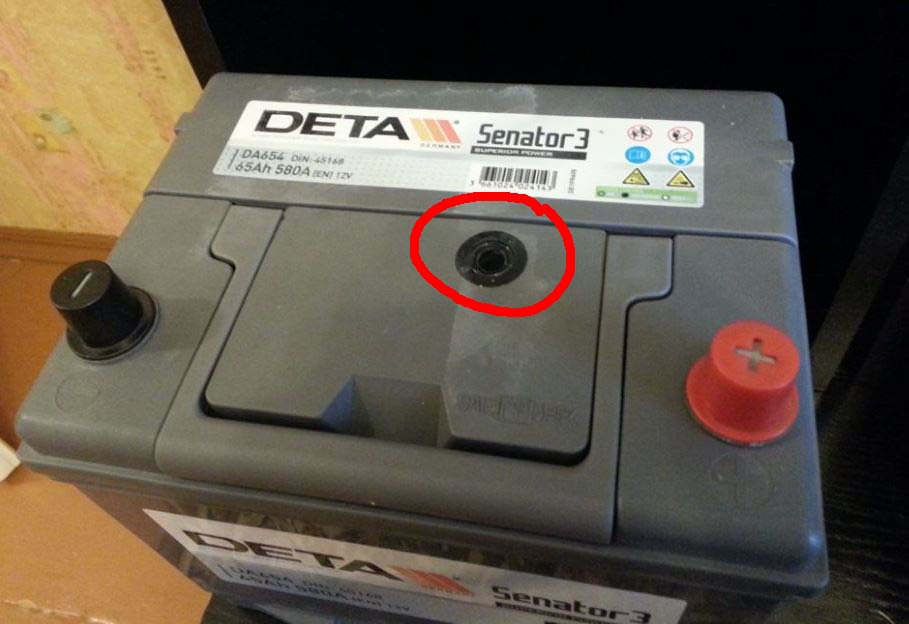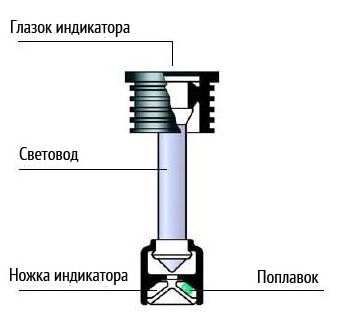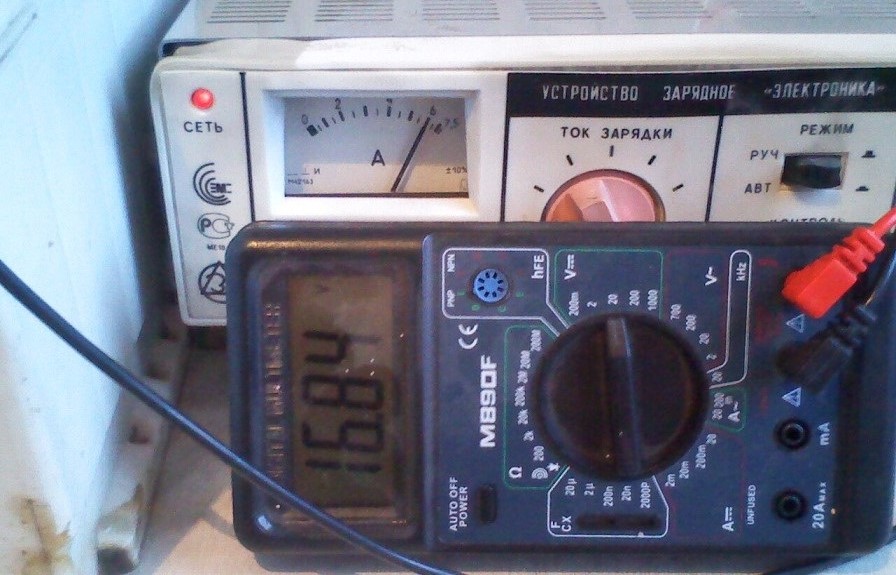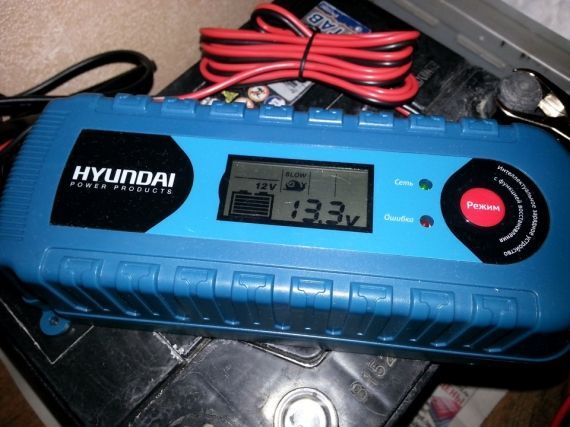
Does it need to be charged? maintenance free battery and how to do it?
Maintenance-free batteries have appeared on the market for quite a long time and have firmly established themselves on it, displacing traditional low-maintenance batteries. They are called maintenance-free because they do not require topping up with distilled water and electrolyte during operation. For this reason, such battery models do not have plugs to access the banks ( battery cells). This group includes calcium batteries. Many questions came from readers of the site about how to charge a maintenance-free car battery. Today's material will be devoted to this topic.
There is an opinion among novice car enthusiasts that if the battery is maintenance-free, then it does not require charging. It requires no less than other batteries. After all, maintenance-free calcium batteries are distinguished by the fact that they do not have (or have very low) water consumption. Alloying the plates with calcium shifts the starting point of water hydrolysis by more high voltage. In standard low-maintenance batteries, water hydrolysis (decomposition into oxygen and hydrogen) begins at a terminal voltage of 14.4 volts.

You can read about why this phenomenon occurs in the material at the link.
For maintenance-free batteries, this value is higher, which significantly reduces water consumption or reduces it to zero. But this does not mean at all that such batteries do not need to be charged. They should be charged when necessary in the same way as for other types of batteries. Moreover, charging a maintenance-free car battery at home is not difficult.
How to understand that you need to charge your battery. In some cases this need will be obvious. For example, you forgot to turn off the headlights or music in the car. By morning, the entire battery capacity has been drained and if you don’t charge the battery, you simply won’t go anywhere. In addition, recharging may be required winter time when, due to low temperature and many working current consumers (stove, heating, windows and mirrors), the battery does not recover its charge well.
So, to the question, is it possible to charge maintenance-free car batteries, the answer is yes. Now a few words about how to properly charge a maintenance-free car battery.
Charging a maintenance free battery?
The main difference will be that you do not have access to jars to check the density of the electrolyte. And you can definitely judge the degree of charge of a car battery only by measuring the density of the electrolyte using a hydrometer. Most have a built-in . But it shows an approximate value. For example, when the capacity reaches 80%, the indicator may show a full charge. Therefore, you should not rely on it.

You can, of course, pick and pull out the indicator. But as a result, it will be possible to measure the density of the electrolyte in only one jar. In addition to the problem with measuring electrolyte density, there are other differences in charging maintenance-free batteries No. Yes, and there are no restrictions on chargers. Those models that charge low-maintenance batteries are quite suitable for maintenance-free batteries.
We have written about charging a car battery more than once. Here we will repeat only a few points. You can charge the battery with constant current or voltage. Both options are suitable for charging maintenance-free battery.
If you are interested in the question, please read the article at the given link.
Constant current mode should be used if the battery has been severely discharged. This charging mode is quite long and requires constant monitoring. But in this case the battery receives maximum capacity restoration. Let's take a quick look at the main stages of DC charging:
- First stage. We set the charge current to 0.1*Cn (nominal battery capacity). For example, 6 amps for a 60 Ah battery. With this current, the charge is carried out until the voltage at the battery terminals is equal to 14.4 V. Naturally, in order to set the current of the required value, you need a charger (charger) with this capability;
- Second phase. When the voltage increases to 14.4 volts, the electrolysis of water is activated and the “boiling” of the electrolyte begins. To reduce the intensity of this process, we reduce the charge current by 2 times and continue the charging process;
- Third stage. When the voltage at the battery terminals reaches 15 volts, you need to reduce the current by half. After this, we continue charging and periodically check the voltage and current. If they do not change, then the battery can be considered fully charged.
Now about constant voltage charging. The point here is to maintain DC voltage at the battery terminals. The degree of charge will depend on the applied voltage. In this case, the charger will turn off the charge when the current decreases to 200 mA. That is, corresponding to self-discharge. This mode is used in most inexpensive chargers. The advantage is that no human control is required.
As they say, “set it and forget it.” Almost all inexpensive automatic chargers operate in this mode.
- Here we can distinguish the following charging options, which differ in voltage and degree of charge:
- Voltage 14.4 volts. The battery charge level after 24 hours is approximately 80%;
- Voltage 15 volts. State of charge 90%;
Voltage 16 volts. The battery will be charged almost 100%. There is also accelerated battery charging, which can also be used for maintenance-free batteries. Charge in accelerated mode
may be required if the battery needs to be restored to functionality very quickly. Let's say the battery is dead and you need to go urgently. Accelerated charging will return part of the capacity needed to start the engine.
Many modern chargers have a Boost charging mode. When turned on, an increased current is supplied and within 20 minutes the battery quickly gains capacity. If your charger model has current regulation, then Boost mode is not needed. Just set the increased current, and that's it. Do not set the current to more than 30% of the standard value. That is, if you usually charge with a current of 4 A, then do not increase more than 5.5 A in Boost mode. This negatively affects the condition of the plates and reduces the life of the battery. We recommend using accelerated charging
only in cases of emergency. If you are not in a hurry, it is better to charge the battery in normal mode. If you abuse the Boost mode, the battery will quickly exhaust its resource.
Now you know how to charge a maintenance-free car battery. If you found this article useful, please share the link to it on social networks. This will help the development of the site. Vote in the poll below and rate the material! Please leave corrections and additions to the article in the comments. IN modern world everything changes. Due to the change In the production of rechargeable batteries, the use of maintenance-free car batteries has become widespread. As a result, questions often arise about how to charge a maintenance-free car battery. Because many car owners, using them, do not know how to properly operate such batteries. This article will tell you how to charge a maintenance-free battery.
Regular car acid battery fails mainly due to a decrease in the electrolyte level. Its level must be periodically monitored and distilled water added. Maintenance-free car batteries can operate without adding water for a fairly long period of time. The water consumption of such batteries is so small that the lids through which water was poured were hermetically sealed, which causes some inconvenience.
Operational problems
- Inability to control the level and density of the electrolyte, which is the main method for diagnosing sulfation of battery plates.
- Reduced possible battery life due to the inability to add distilled water to maintain the electrolyte level.
- Maintenance-free batteries may become unusable after the defect in the vehicle equipment is repaired.
Therefore, car batteries with holes in the plugs for adding water are in a more advantageous position. In the event of a malfunction of such batteries, measuring the density of the electrolyte in the banks in most cases will provide the most comprehensive information for ways to eliminate the causes and make further decisions.
Maintenance-free car batteries have indicators that allow you to determine the state of charge. This indicator is called a hydrometer. This is a float ball placed under the battery plates in one of the cans. It rises and falls when the electrolyte reaches a certain density.
Disadvantages of a hydrometer
- This indicator allows you to find out how long to charge a maintenance-free battery. It begins to provide information that allows you to determine the performance of the battery when the minimum charge level is reached, which is about 65% of the capacity. Disadvantage: the indicator readings do not change with further increase in electrolyte density, that is, when charging to 100%.
- The next disadvantage is that in this way you can obtain information about the charge in only one bank.
- And finally, there is one more drawback of such an indicator. It does not provide information if the electrolyte level is reduced to the point where the plates are exposed.
If car owners decide to use maintenance-free car batteries, then they must very carefully monitor the proper operation of electrical equipment. Namely:
- for the serviceability of the generator;
- the quality of operation of the voltage regulator;
- for the absence of current leakage in the alarm system and electrical equipment.
Although such batteries are called maintenance-free, they still need to be serviced. They also require periodic charging
Charging Features
Let's look at how to charge a maintenance-free car battery. It can, sometimes even needs to be charged. This is done using special chargers. They maintain the output voltage, but do not stabilize the charging current, but only control it.
- Connecting to a charger.
- Setting the device voltage regulator to the minimum level.
- Turn on the charger.
- Set the charging voltage to 14.4V.
- Charging has started.
It is impossible to harm the battery with this voltage. For such batteries, the main charging characteristic is voltage, not current. During charging, the current gradually decreases. Charging will end when the current drops to 0.2.A at a voltage of 14.4V. Under no circumstances should the voltage at the terminals of a maintenance-free car battery be allowed to rise above 15.5 volts. It is better not to give a current of more than 2 amperes. Charging lasts 25-30 hours at DC, that is, the charger must increase the voltage by the time charging is complete.
Now you know how to properly charge a maintenance-free battery.
Hello everyone, readers and subscribers of my autoblog! In previous publications, we have already looked at the main problems that may occur to a driver in the event of. Here’s another common situation: how to charge a maintenance-free battery? There are many recommendations and myths on this topic. Some of them are so abstruse that it can be difficult for the average car enthusiast to understand the essence of the process. Let's try to explain this in accessible language.
You need to understand the difference between a serviceable battery and a non-serviceable one. In the case of the latter, the driver does not have to add electrolyte to it, monitor its level in the banks or measure the density. That is why it received such a name in everyday life. Each time the engine is started, it will lose part of its capacity, and the process of its restoration will depend on how often it is used vehicle. Therefore, to the question of whether such a battery needs to be charged, the answer will be unequivocal - it is necessary.
From the very beginning, you need to establish the approximate age of the car battery. If the battery lasts for more than 5 years, then don't even waste time on it. You will not be able to restore its charge for a long time, so it is better to scrap it and buy a new one. When we talk about maintenance-free products, we must understand that we will not be able to track the process of boiling off the electrolyte during charging. That is, you will have to figure out how much to charge in time only by looking at the clock.
There are also some risks associated with the release of vapors and gases. If the electrolyte boils, the battery may simply rupture. That is why it is necessary to detect the beginning and end of this process. It is especially unsafe when the driver tries to restore capacity within short term and immediately supplies more current. This will simply “kill” the battery, and nothing good will come to it. 
Therefore, fully automated workstations have appeared on sale, which are no longer equipped with either a voltmeter or an ammeter. The driver does not need to know anything about these parameters. They themselves calculate the current and voltage at various stages and regulate them, making them either less or more. Whether they charge more efficiently than traditional devices is unknown, but they are safer to use - that’s a fact. Therefore, with such a device you don’t have to worry about the electrolyte boiling - the charger will simply turn off automatically when the critical temperature is reached.
Instructions for restoring battery capacity on your own
And now detailed algorithm steps on how to properly charge a maintenance-free battery:

How to calculate the duration of the charging procedure
At home, car batteries are charged using automatic chargers. For such batteries, their degree of charge will depend on the voltage supplied by the device. We answer the question, how long will it take for such a process? A 12-volt battery is restored to 90% of its previous capacity using a voltage of 15 volts per 24 hours.
 A good device automatically installs a program to restore battery capacity. It not only controls the current, but also selects the necessary voltage to achieve maximum effect. Before connecting, do not forget to make sure that the minus is connected to the negative terminal, and the plus is connected to the plus. The red terminal is always attached to the “plus” of the battery, while the black terminal is always attached to the “-”.
A good device automatically installs a program to restore battery capacity. It not only controls the current, but also selects the necessary voltage to achieve maximum effect. Before connecting, do not forget to make sure that the minus is connected to the negative terminal, and the plus is connected to the plus. The red terminal is always attached to the “plus” of the battery, while the black terminal is always attached to the “-”.
If you use such a device at home or in the garage, make sure that the room is properly ventilated. During charging, chemically unsafe substances may be released into the atmosphere, which there is absolutely no need to inhale.
In general, it is not recommended to charge the battery in rooms where people are constantly present, that is, at home. IN as a last resort do this on a loggia or balcony, be sure to open the window to the street.
And finally, one more small recommendation. We have roughly figured out how long it takes to charge a standard battery. However, automatic device costs some money, and therefore if this process is in demand only from time to time, then it makes sense to turn to specialized car services, where you can recharge for a small fee. Also in the continuation of this topic you can find out why
Many people are interested in how to charge a maintenance-free car battery. charger and is it possible to do this? This interest is associated with the increasing distribution of such batteries. At the same time, many drivers do not know what it is and how to operate this equipment. Most people believe that there is no need to do anything with this type of battery. Due to this approach, the service life of this equipment is noticeably reduced. But also improper care significantly reduces the trouble-free operation time of such batteries.
In fact, the only job of caring for a maintenance-free battery is recharging it. This maintains its performance throughout its entire service life.

What it is?
To answer this question, you need to understand the operating features of such a battery. A special feature of these batteries is the location of the electrodes; they are located directly at the bottom of the battery. This made it possible to place an additional supply of electrolyte above them. A larger amount of electrolyte, together with more gentle alloys used in the electrodes, allows this system to operate much longer without human intervention. At correct operation The service life of such batteries reaches 5 years.
By calling these batteries maintenance-free, the manufacturer says there is no need to control the amount of electrolyte. But, for the battery to work properly, it still needs to be charged. This is especially important in winter, when energy consumption increases and the generator cannot always cope with the increased load.

Flaws
Unfortunately, the batteries currently used maintenance-free type there are a number of disadvantages. The main one is increased sensitivity. If the alternator belt is not tightly tensioned or the relay-regulator is not working properly, then maintenance-free battery It becomes unusable quite quickly. No subsequent repairs will correct the situation.
It is also quite difficult to assess the performance of such a battery. You may observe malfunctions, but it is impossible to fully check the condition of a maintenance-free battery.

Charger
So, based on the beginning of the article, you can charge a battery of this type, but you need to do it very carefully. Otherwise, the battery will quickly fail. First you need to determine when to do this. The only way to check the condition of the battery is to measure the voltage at its terminals. Ideally, this indicator should be 13.5 V. Therefore, we take a multimeter and measure this indicator. If the device shows a voltage less than normal, then the battery should be recharged. If this indicator is less than 12.5 V, this must be done immediately. At the same time, check the functionality of the generator. In the same place, it is very difficult to discharge the battery to “zero”.
Before charging, it is advisable to bring the battery into a warm room. This is especially true for winter. This process occurs most efficiently at room temperature. Do not forget that when charging a battery, hydrogen is released. Therefore, the room should be well ventilated.

It is advisable to use an automatic charger (charger) to charge such a battery. First of all, it's much better for the battery. It will probably charge as long as needed, depending on its condition. Secondly, you get rid of the need to monitor the process. This is especially convenient when long-term charging is required. All the work consists of attaching the crocodiles to the terminals. Do not mix up the terminals, “plus” goes to “plus”. Otherwise, you risk damaging both the battery and the charger.
If you only have a regular memory, then you will have to tinker a little to do everything right. First, you should calculate the current required for charging. It is usually equal to 10% of capacity. Let's say your battery has a capacity of 65 A/hour, then for the initial charge you will need to set it to 6.5 A. In the case when the battery is completely discharged, you should hold it at a current of 1-2 A for about an hour, this will excite the battery. Next you need to set the current to normal values. You should also monitor the voltage; this figure should not exceed 14.4 V.
The difficulty of “manually” charging a maintenance-free battery is the inability to fully control the process. After all, the time of decline charging current determined by the state of the electrolyte, here it has to be done blindly. Therefore, there is a chance to overcharge or undercharge the battery. Which in both cases is not very good.
Conclusion. Car batteries They are becoming more and more perfect, but they still need to be properly monitored. This increases their service life. Therefore, it is useful for a car enthusiast to know how to charge a maintenance-free car battery with a charger and whether this can be done. After all, such batteries are increasingly found on cars. Ah, many modern models originally designed for use of this type of battery.



